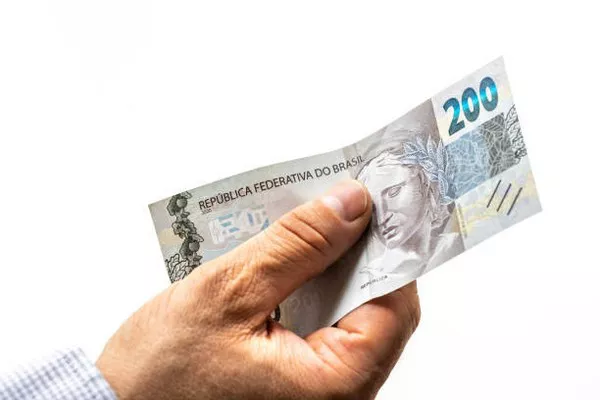The Brazilian real has experienced a notable period of depreciation against major currencies in recent times, raising questions about the underlying causes and potential consequences. This article explores the multifaceted reasons behind the weakening of the Brazilian real and analyzes the broader economic impact.
Economic Fundamentals and Currency Depreciation
The value of a country’s currency, like the Brazilian real, is influenced by several economic factors. Let’s delve into the key fundamentals affecting the depreciation of the Brazilian real:
1. Inflationary Pressures
Inflation has been a persistent challenge in Brazil, exerting downward pressure on the real.
In recent years, Brazil has struggled with stubbornly high inflation rates. The combination of domestic factors such as supply chain disruptions, rising commodity prices, and fiscal policy challenges has fueled inflationary pressures. Consequently, the Central Bank of Brazil has resorted to interest rate hikes to combat inflation, which in turn can affect the value of the real.
Impact on Investor Sentiment
The Brazilian real’s depreciation due to inflationary pressures can erode investor confidence. Foreign investors might perceive higher inflation as a risk to the real’s future value, leading to capital outflows and further depreciation.
2. Fiscal Policy and Government Debt
Brazil’s fiscal situation has contributed significantly to the weakening of its currency.
The country has faced ongoing fiscal challenges, with high government spending and mounting public debt. This fiscal strain can undermine confidence in the economy and its currency. Investors closely monitor Brazil’s fiscal policies and debt levels, as excessive debt can lead to concerns about default risk and currency stability.
Role of Government Policies
Efforts by the Brazilian government to address fiscal deficits and restore economic stability can play a crucial role in stabilizing the real. Fiscal reforms aimed at reducing public debt and restoring fiscal discipline can boost investor confidence and support the currency.
3. External Factors: Global Economic Conditions
External economic conditions, particularly global commodity prices and interest rates, impact the Brazilian real’s exchange rate.
Brazil is a major exporter of commodities such as soybeans, iron ore, and oil. Fluctuations in global commodity prices directly affect Brazil’s export revenues and trade balance. Lower commodity prices can lead to reduced foreign exchange inflows, adding downward pressure on the real.
Exchange Rate Dynamics
Global interest rate trends also influence the real’s exchange rate. Divergence in monetary policies among major economies can lead to shifts in capital flows, affecting currency valuation. Brazil’s currency is sensitive to changes in global interest rate differentials, which can attract or repel foreign investment.
Market Sentiment and Capital Flows
The Brazilian real’s depreciation is often influenced by market sentiment and capital flows.
1. Investor Confidence and Risk Perception
Market sentiment plays a crucial role in determining the value of the Brazilian real. Foreign investors assess Brazil’s economic and political stability when making investment decisions. Political uncertainty, governance issues, and perceived risks can weigh on investor confidence, leading to capital flight and currency depreciation.
Impact of External Shocks
External shocks, such as geopolitical tensions or global economic downturns, can exacerbate currency depreciation. Brazil’s vulnerability to external factors underscores the importance of building resilience through diversified economic policies.
2. Capital Flight and Foreign Exchange Reserves
Capital flight, driven by concerns over economic stability or policy uncertainty, can accelerate currency depreciation.
Brazil’s foreign exchange reserves act as a buffer against external shocks and currency speculation. Depletion of reserves due to capital outflows can weaken the real further. Central bank interventions to stabilize the currency can also deplete reserves, affecting long-term currency stability.
Central Bank Policies
The Central Bank of Brazil plays a critical role in managing currency fluctuations. Its interventions in the foreign exchange market can influence short-term currency movements. However, sustained interventions may have implications for monetary policy and inflation management.
Implications of Weakening Real: Economic and Social Impact
The depreciation of the Brazilian real carries significant implications for various sectors of the economy and society.
1. Inflation and Cost of Living
Currency depreciation can lead to imported inflation, affecting the cost of essential goods and services. Higher prices erode purchasing power, especially for low-income households, potentially exacerbating income inequality.
Policy Responses
To mitigate the impact of inflation, policymakers may implement targeted fiscal and monetary measures. These can include price controls, subsidies, or income support programs to cushion vulnerable populations.
2. Trade and Export Competitiveness
A weaker real can enhance the competitiveness of Brazilian exports in global markets.
Brazilian exporters benefit from a depreciated currency, as their goods become more affordable for foreign buyers. This can boost export revenues and stimulate economic growth. However, reliance on currency depreciation as a competitiveness strategy has its limitations and risks.
Structural Reforms
Structural reforms aimed at improving productivity and reducing trade barriers can enhance Brazil’s export competitiveness over the long term.
3. Investment and Economic Growth
Currency depreciation can attract foreign investment in certain sectors but deter investment in others.
While a weaker real can make Brazilian assets more attractive to foreign investors, it may also increase the cost of imported capital goods and technology. This can pose challenges for sectors reliant on foreign investment for growth and innovation.
Policy Coordination
Policy coordination across fiscal, monetary, and trade domains is essential to leverage currency depreciation for sustainable economic growth.
Conclusion
The weakening of the Brazilian real reflects a complex interplay of domestic and external factors. Addressing the root causes of currency depreciation requires concerted efforts by policymakers, businesses, and society. By fostering economic stability, enhancing competitiveness, and strengthening institutions, Brazil can navigate currency challenges and promote sustainable development.
In summary, the trajectory of the Brazilian real underscores the importance of comprehensive economic reforms and strategic policy interventions to enhance resilience and foster inclusive growth.


